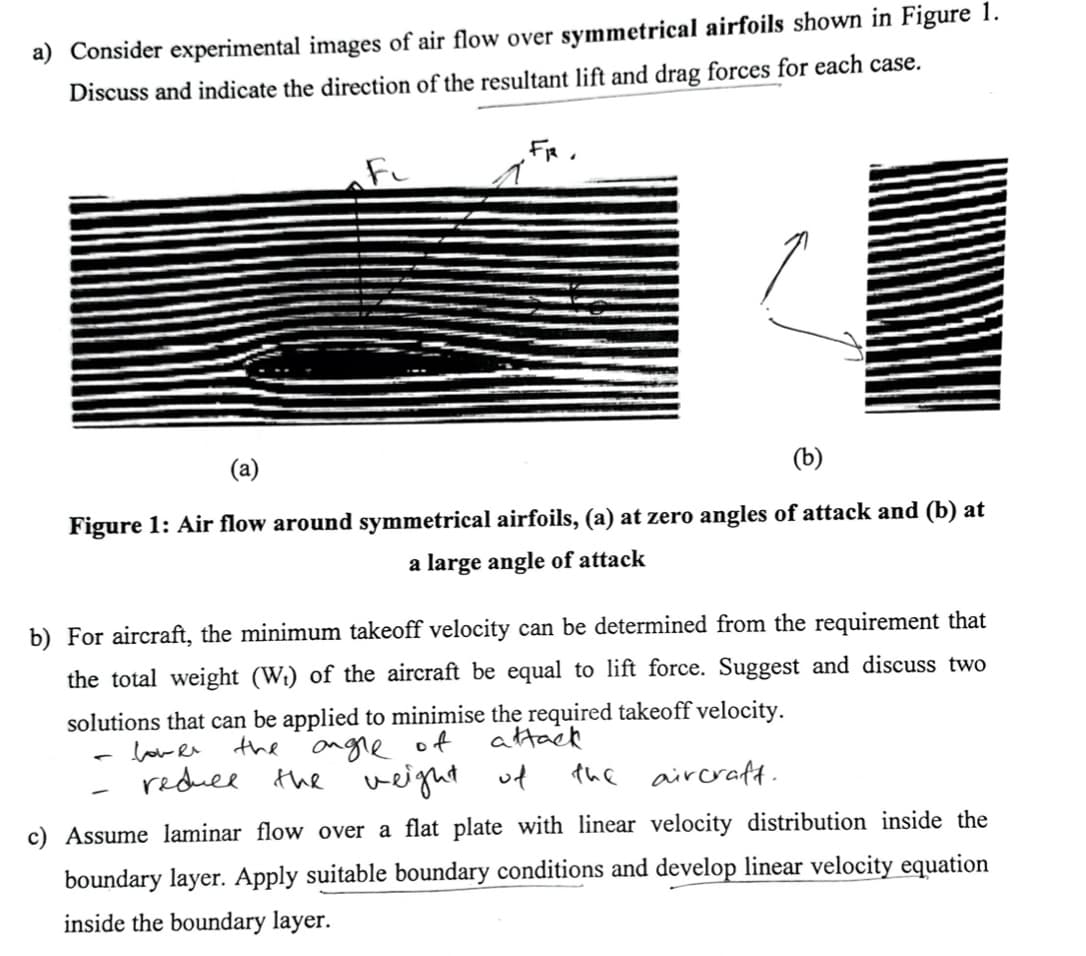Consider experimental images of air flow over symmetrical airfoils shown in Figure 1. Discuss and indicate the direction of the resultant lift and drag forces for each case.
Consider experimental images of air flow over symmetrical airfoils shown in Figure 1. Discuss and indicate the direction of the resultant lift and drag forces for each case.
Principles of Heat Transfer (Activate Learning with these NEW titles from Engineering!)
8th Edition
ISBN:9781305387102
Author:Kreith, Frank; Manglik, Raj M.
Publisher:Kreith, Frank; Manglik, Raj M.
Chapter5: Analysis Of Convection Heat Transfer
Section: Chapter Questions
Problem 5.49P
Related questions
Question

Transcribed Image Text:a) Consider experimental images of air flow over symmetrical airfoils shown in Figure 1.
Discuss and indicate the direction of the resultant lift and drag forces for each case.
FR.
(a)
(b)
Figure 1: Air flow around symmetrical airfoils, (a) at zero angles of attack and (b) at
a large angle of attack
b) For aircraft, the minimum takeoff velocity can be determined from the requirement that
the total weight (Wi) of the aircraft be equal to lift force. Suggest and discuss two
solutions that can be applied to minimise the required takeoff velocity.
low e the angre of
reduee
attack
the veight
uf
the
aircraft.
c) Assume laminar flow over a flat plate with linear velocity distribution inside the
boundary layer. Apply suitable boundary conditions and develop linear velocity equation
inside the boundary layer.
Expert Solution
This question has been solved!
Explore an expertly crafted, step-by-step solution for a thorough understanding of key concepts.
Step by step
Solved in 4 steps with 2 images

Knowledge Booster
Learn more about
Need a deep-dive on the concept behind this application? Look no further. Learn more about this topic, mechanical-engineering and related others by exploring similar questions and additional content below.Recommended textbooks for you

Principles of Heat Transfer (Activate Learning wi…
Mechanical Engineering
ISBN:
9781305387102
Author:
Kreith, Frank; Manglik, Raj M.
Publisher:
Cengage Learning

Principles of Heat Transfer (Activate Learning wi…
Mechanical Engineering
ISBN:
9781305387102
Author:
Kreith, Frank; Manglik, Raj M.
Publisher:
Cengage Learning